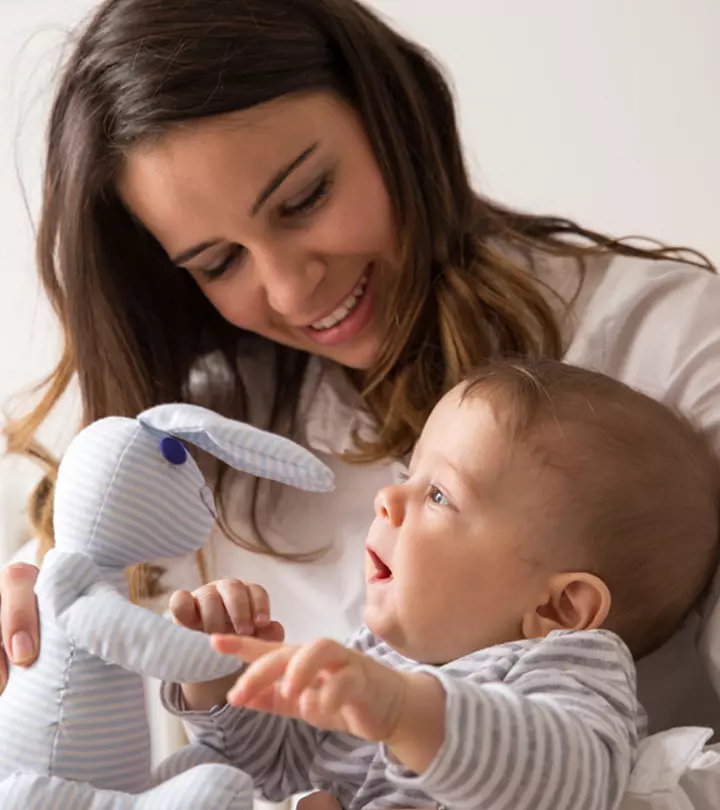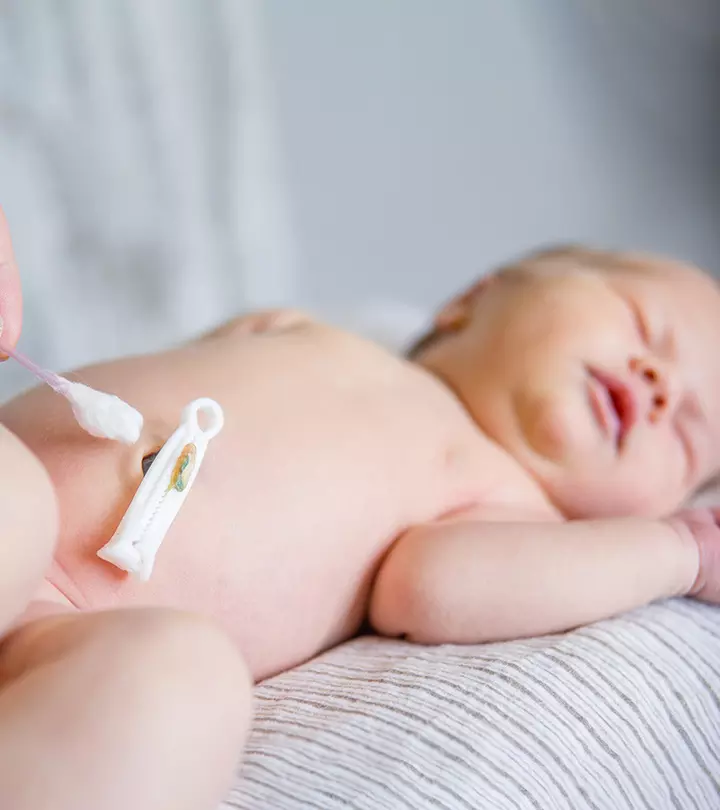
Image: Shutterstock
There are several things about pregnancy that you learn on the go. No matter how much you prepare for it or read about it, there will be elements that are bound to surprise you. One such thing is umbilical cord care. You probably already know what role the umbilical cord plays during your pregnancy. But just to make things clear, the umbilical cord connects the mother to the baby in the womb. It acts as a medium to transfer oxygen and nutrients to the baby. It also helps in transporting waste from the baby to the mother and helps eliminate it from the body.
After childbirth, the umbilical cord is clamped and cut, leaving your baby with a short stump. It’s important to care for this stump and prevent any infections from forming as it could be pretty dangerous. Eventually, the stump dries up and falls off. It takes anywhere between five and fifteen days for this to happen, and it’s essential to take good care of it (1). Keep reading as we tell you how you can care for your baby’s umbilical cord:
How Should You Take Care Of The Stump?
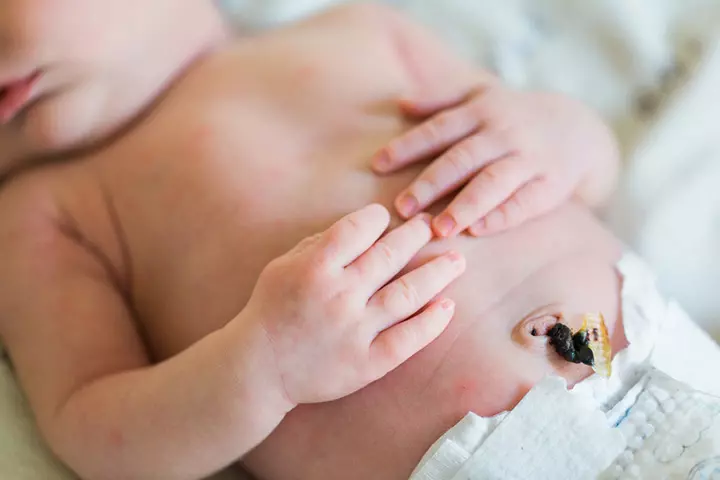
Image: Shutterstock
The stump area dries out and falls off after birth, usually within one to three weeks. In those two to three weeks, you need to be extra careful with it and make sure the area is wiped free of germs and bacteria. That is why hygiene is usually given top priority for newborn babies. Meanwhile, here’s what you can do to take care of it and keep it clean and free from getting infected:
Keep It Dry
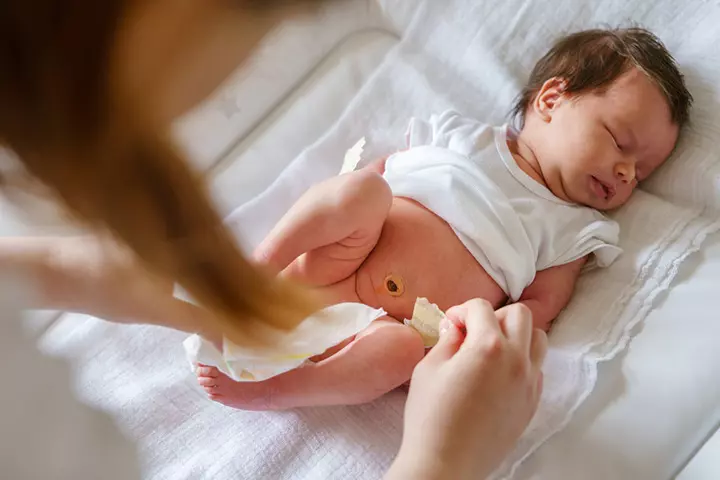
Image: Shutterstock
Keep the stump dry. It requires air to help dry out easily. When your baby has diapers on, it could cover the stump and prevent it from drying naturally. Therefore, fold down the front of your baby’s diaper to avoid covering the stump. Most of the time, regular washes can leave it damp, even if you wipe it thoroughly. Give it some room to dry completely to avoid any kind of unpredictable infection. Yes, dead skin cells can also be a cause. If not scrubbed properly, those cells will retain the moisture internally and start causing issues before you know it.
Sponge Is The Way
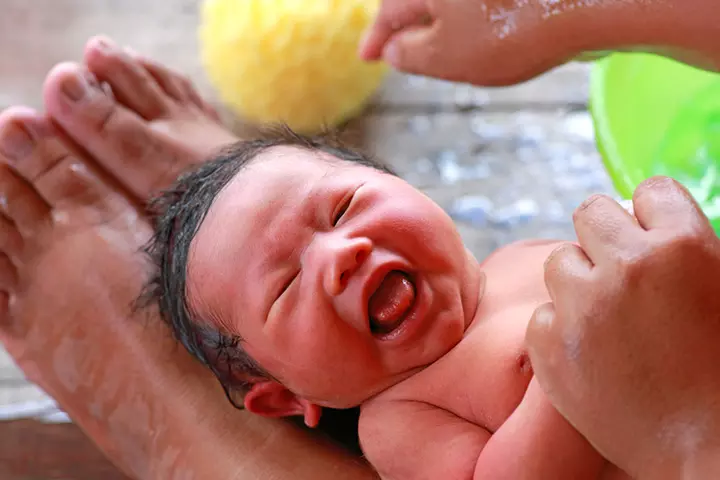
Image: Shutterstock
Your baby is still tiny and adapting to life outside the womb. Therefore, instead of giving them regular baths, you could stick to sponge baths. It’s okay to clean out the stump while giving your baby sponge baths but ensure that you dry it out after it’s done. Avoid leaving the stump damp. Regular baths are more prone to thoroughly drench the stump as compared to a sponge bath, as it is easier to guide the sponge and avoid excessive water entering the stump area.
Wait For The Stump To Fall Off On Its Own
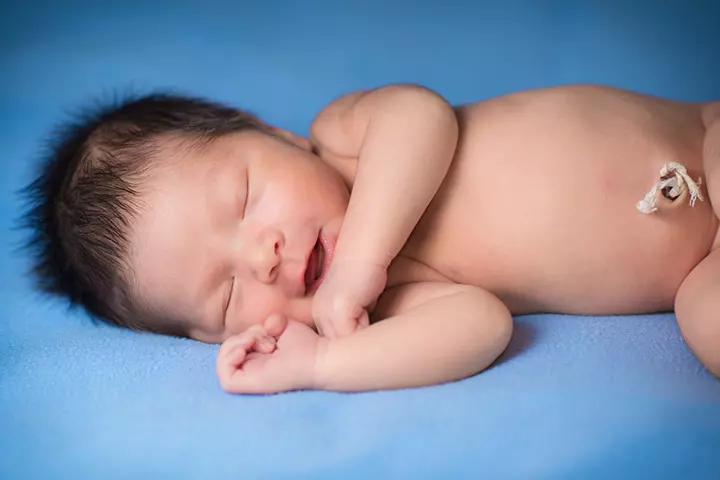
Image: Shutterstock
For some inexperienced people, it can be a running myth that the cord needs to be removed immediately after birth. This one is for all you fidgety folks out there! Avoid pulling out the stump no matter how tempted you are. The stump will fall off on its own once it has completely dried out. Therefore, let it be, and don’t mess with it even if it’s just hanging on by a thread. If the cord is forcibly removed, it is basically like cutting open a wound and leading to excessive bleeding and serious health issues. That’s why it is crucial to let it be for the first few weeks and let it dry and scab naturally.
How Do You Know If There’s A Problem?

Image: Shutterstock
You might take care of the stump in the best way possible, but you should also keep an eye out for signs of trouble. If the stump is infected, it could spread quickly and lead to further complications. Here are a few things you should look out for:
Signs Of A Local Infection
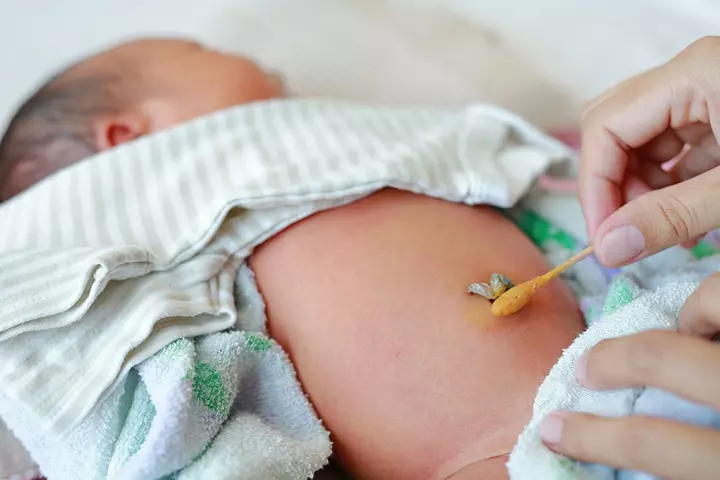
Image: Shutterstock
If the stump emits a foul smell and has a yellow pus-like substance oozing out, it could be a sign of infection. Another sign that you should look out for is any redness, swelling, or tenderness of the skin around the stump area. If you notice any of these signs, consult a doctor immediately.
It is crucial to take extra care of your baby for better recovery. Start by disinfecting your hands thoroughly before touching the baby. Even more when you are supposed to touch the already infected umbilical cord. Firstly, gently clean the belly area around the cord. As neighboring dirt particles are also likely to increase infection, even if the cord is kept tidy. It is advised to use a slightly damp cloth with a little bit of alcohol. If you don’t have disinfected cloth, you can also make use of cotton swabs. Spot the yellow discharge and traces of blood that you find there. Gently wipe it out and finish by applying medically-prescribed antiseptic ointment to help reduce the redness and infection. Finally, use a dry cloth to pat or absorb any signs of moisture.
Signs Of A Serious Infection
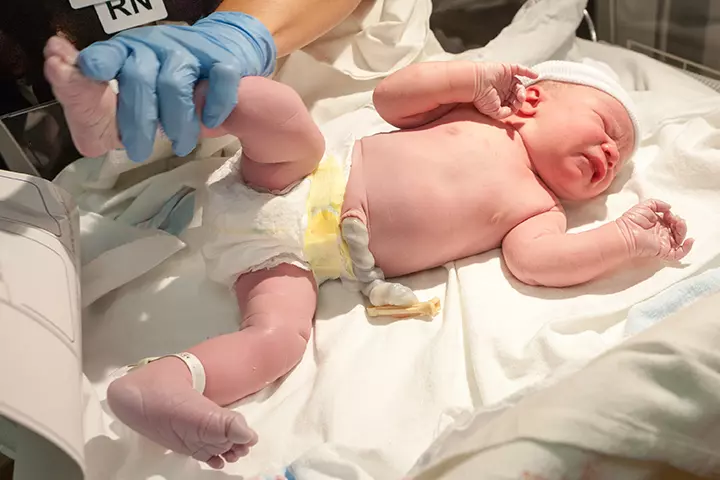
Image: Shutterstock
Your baby might have a more severe infection if the following sign persists:
- Poor feeding
- Fever (Above 100.4 ℉)
- Floppy or poor muscle tone
- Lethargy
Things To Remember
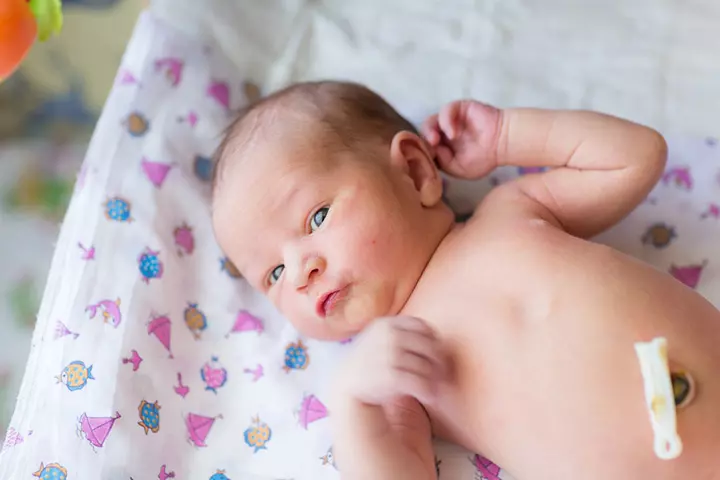
Image: Shutterstock
It’s also important to know that it’s normal to witness some bleeding near the stump when it falls off. It heals like a scab and can leave behind some tears on your baby’s skin when it dries out and falls off. Another thing worth mentioning is that you should contact your baby’s doctor if the stump has not fallen off after three weeks. It could point to an underlying immune system disorder or some other problem that requires medical intervention.
If your baby is free of any umbilical cord infection, make sure to apply talcum powder after every shower session, to make sure that the area is dry. Other than the above precautions, the umbilical cord is pretty harmless to your baby. There are no potential life-threatening diseases that have been diagnosed from this until now. All you need to do is maintain hygiene and also keep the baby in a tidy environment. Did your baby have trouble with the stump from the umbilical cord? Let us know in the comments below how you took care of it!
References
- Umbilical cord care in newborns
https://medlineplus.gov/ency/article/001926.htm
Community Experiences
Join the conversation and become a part of our nurturing community! Share your stories, experiences, and insights to connect with fellow parents.







